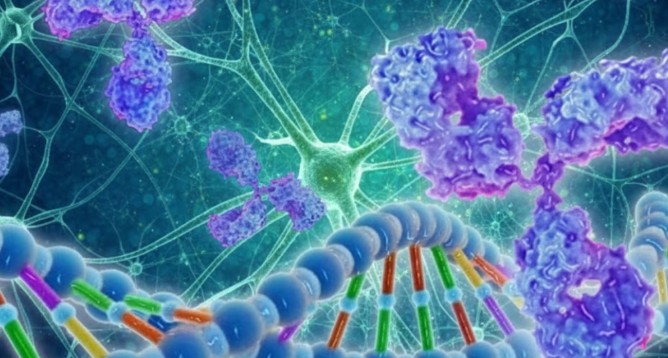The ability to study and control proteins with precision has opened up new opportunities in life science research.
Recombinant proteins are at the heart of the advancements. These proteins are produced using recombinant DNA technology to produce large quantities of pure proteins. They can be used for in-depth study. Recombinant proteins can be tailored to specific research needs by expressing specific genes in host organisms like
- Bacteria
- Yeast
- Mammalian cells
For example, Recombinant Rat Cathepsin B is widely used to investigate protease-driven mechanisms in models that reflect rat physiology.
This is particularly helpful to:
- Study complex biological processes
- Develop new treatments
- Improve diagnostic tools
Here, we will learn about the role of recombinant proteins in modern life science research.
Host Systems and Their Importance
The choice of host system impacts the yield, folding, and functionality of recombinant proteins.
Here are commonly used host systems:
E.coli
Fast, cheap, and gives high protein yields. Best for proteins that don’t need complex modifications after they are made.
Yeast
Offer some eukaryotic-style modifications (like adding sugars), while still being affordable and scalable.
Baculovirus/Insect Cells
Good for making complex human-like proteins that need proper folding and sugar attachments.
Mammalian Cells
Best for producing proteins that require exact human-like modifications and full biological activity.
Applications in Life Science Research
Recombinant proteins are important tools in many areas of life science research:
Structural Biology
Scientists use three main techniques to see protein structures:
- X-ray crystallography
- NMR spectroscopy
- Cryo-electron microscopy (cryo-EM)
All of these methods need pure and plentiful protein samples. Recombinant proteins provide exactly that high-quality, abundant protein. It makes it possible to study how:
- Proteins are built
- They work
- They interact with other molecules
Functional Studies
Functional studies help to understand how proteins and other biological molecules work inside living cells. The goal is to figure out how they:
- Carry out everyday cell tasks
- Interact with other molecules
- Take part in biological pathways
—all of which affect health and disease.
Recombinant proteins make these studies possible by providing clean, pure, and specially designed proteins that can be tested in controlled lab experiments.
Drug Discovery
Recombinant proteins are very useful in drug discovery. They help in key steps, like:
- Target validation
- High-throughput screening (HTS)
- Antibody development
Because recombinant proteins are pure, they can be made in large amounts and customized into different shapes. Scientists can:
- Study how drugs bind to their protein targets
- Find potential new drug candidates
- Design better antibody-based treatments
Diagnostic Tools
ELISA is a common lab test that detects specific proteins or antibodies by using the precise match between an antigen and an antibody.
Recombinant proteins enhance the effectiveness of ELISA in three key ways:
Standardization
They provide a steady, consistent supply of the target protein, which makes test results more reliable and repeatable.
High Specificity and Sensitivity
Recombinant proteins are very pure and have a clear structure. They help reduce false signals and improve the test’s ability to detect the right biomarker.
Scalability
They can be made in large amounts to make it easier to produce diagnostic kits for widespread use.
Recombinant Protein Quality and Handling
The quality and purity of recombinant proteins are very important for reliable results. These proteins are usually purified using affinity chromatography, which separates the target protein from other substances.
To check purity, scientists use SDS-PAGE—a method that shows if the protein is clean (typically >85% pure), intact, and still active.
For storage, recombinant proteins should be kept at very cold temperatures, usually between –20°C and –80°C. It is also important to avoid freezing and thawing as this can damage the protein and reduce its stability.
Conclusion
The ability of recombinant proteins to be produced in large quantities with high purity has made them suitable for applications such as:
- Structural biology
- Functional studies
- Drug discovery
- Diagnostics
These proteins can be used to understand complex biological processes. Recombinant DNA technology can be used to create accurate, highly customizable natural proteins called Recombinant Rat Cathepsin B. It is a rat-derived form of the enzyme that has been engineered for study or experimental use. You can enhance the effectiveness of your experiments largely by the quality and purity of the recombinant proteins. Consider the right provider for recombinant proteins to ensure the quality, consistency, and reliability of proteins.

